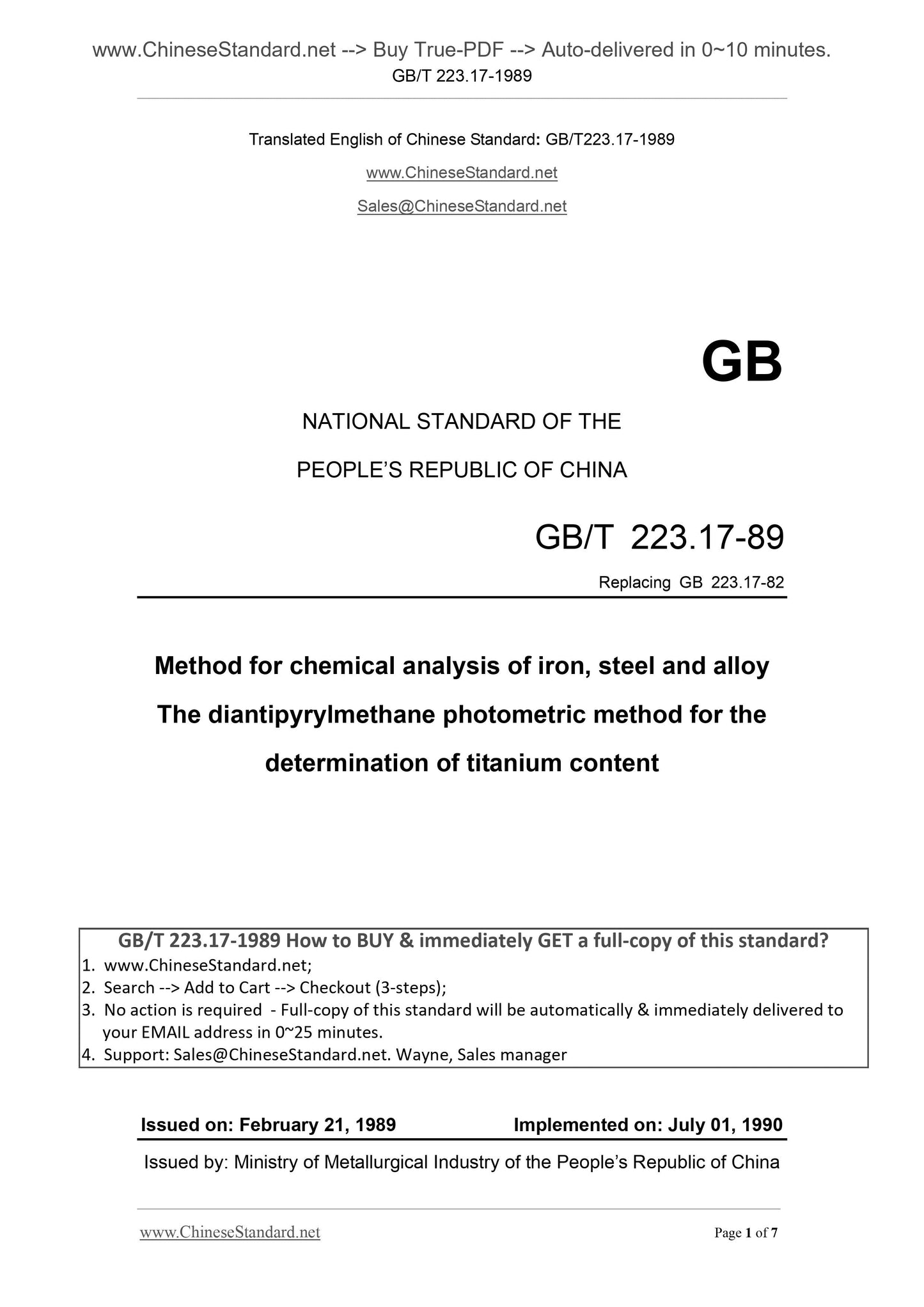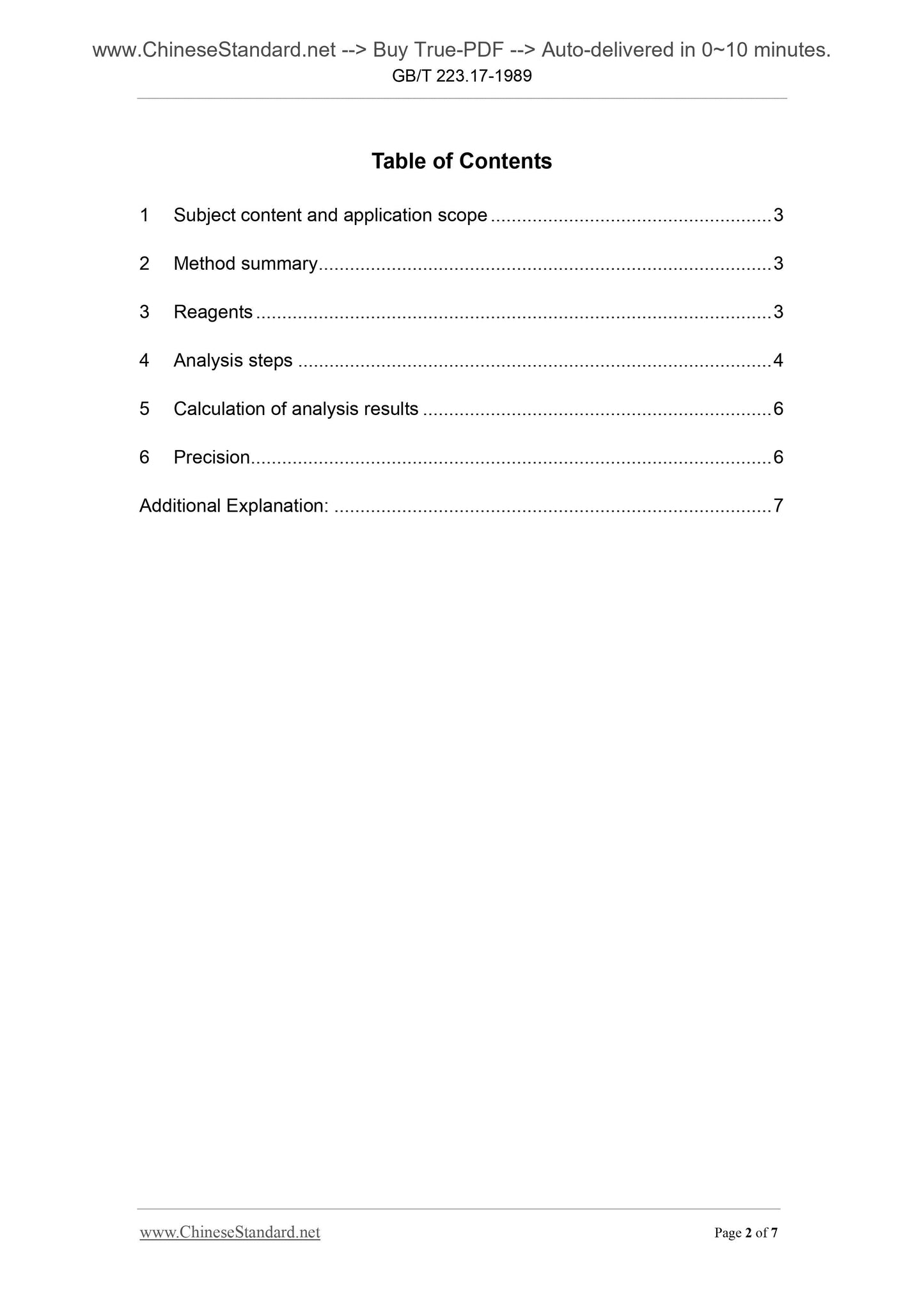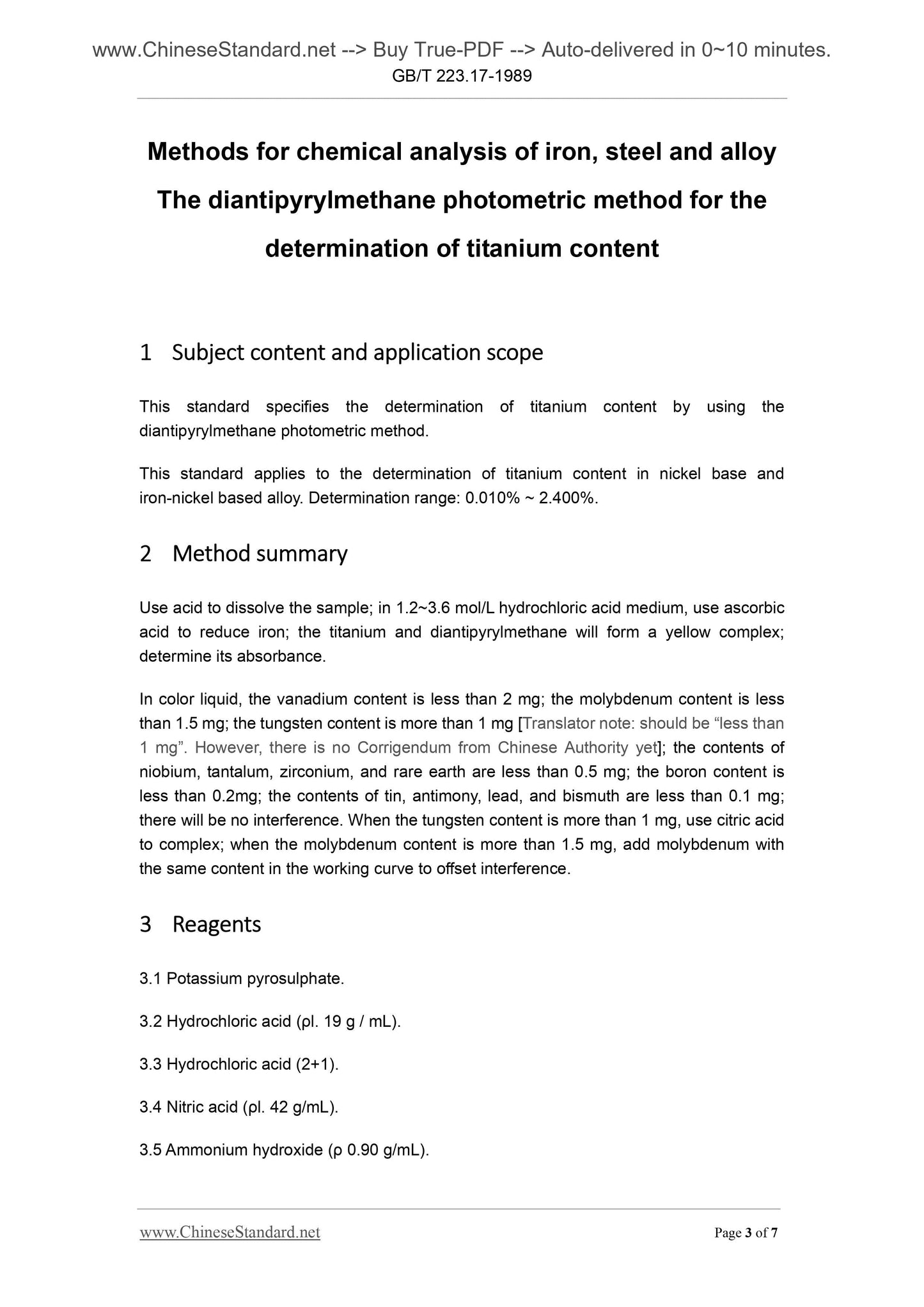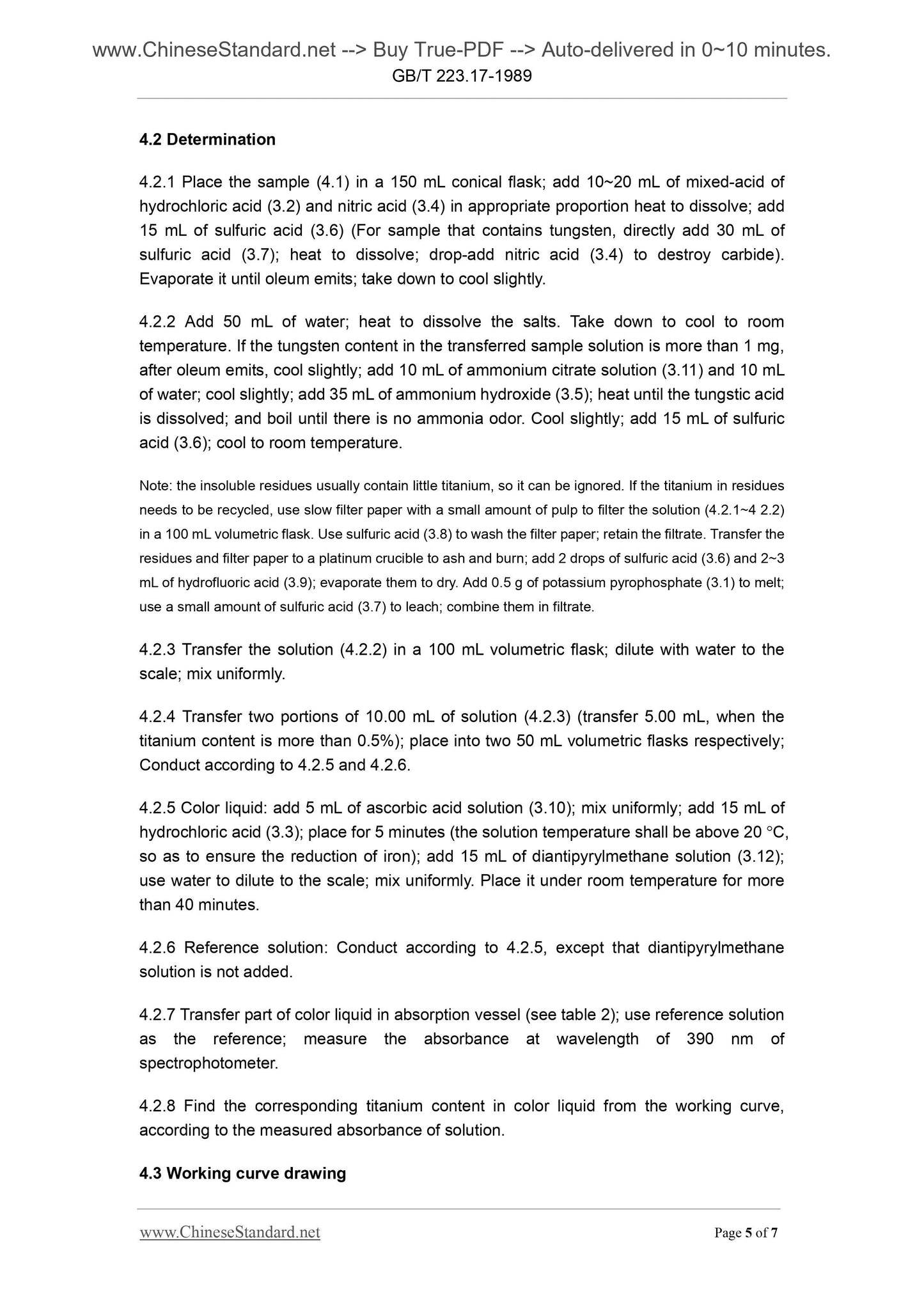1
/
of
4
www.ChineseStandard.us -- Field Test Asia Pte. Ltd.
GB/T 223.17-1989 English PDF (GB/T223.17-1989)
GB/T 223.17-1989 English PDF (GB/T223.17-1989)
Regular price
$85.00
Regular price
Sale price
$85.00
Unit price
/
per
Shipping calculated at checkout.
Couldn't load pickup availability
GB/T 223.17-1989: Methods for chemical analysis of iron, steel and alloy - The diantipyrylmethane photometric method for the determination of titanium content
Delivery: 9 seconds. Download (and Email) true-PDF + Invoice.Get Quotation: Click GB/T 223.17-1989 (Self-service in 1-minute)
Newer / historical versions: GB/T 223.17-1989
Preview True-PDF
Scope
This standard specifies the determination of titanium content by using thediantipyrylmethane photometric method.
This standard applies to the determination of titanium content in nickel base and
iron-nickel based alloy. Determination range. 0.010% ~ 2.400%.
Basic Data
| Standard ID | GB/T 223.17-1989 (GB/T223.17-1989) |
| Description (Translated English) | Methods for chemical analysis of iron, steel and alloy - The diantipyrylmethane photometric method for the determination of titanium content |
| Sector / Industry | National Standard (Recommended) |
| Classification of Chinese Standard | H11 |
| Classification of International Standard | 77.08 |
| Word Count Estimation | 4,448 |
| Date of Issue | 3/31/1989 |
| Date of Implementation | 7/1/1990 |
| Older Standard (superseded by this standard) | GB 223.17-1982 |
| Adopted Standard | JIS G1223-1981, NEQ |
| Issuing agency(ies) | State Bureau of Technical Supervision |
| Summary | This standard specifies the use of methane two antipyrine spectrophotometric determination of titanium content. This standard applies to nickel-based, determination of titanium content of titanium nickel-based alloys. Measuring range: 0. 010% - 2. 400%. |
Share







